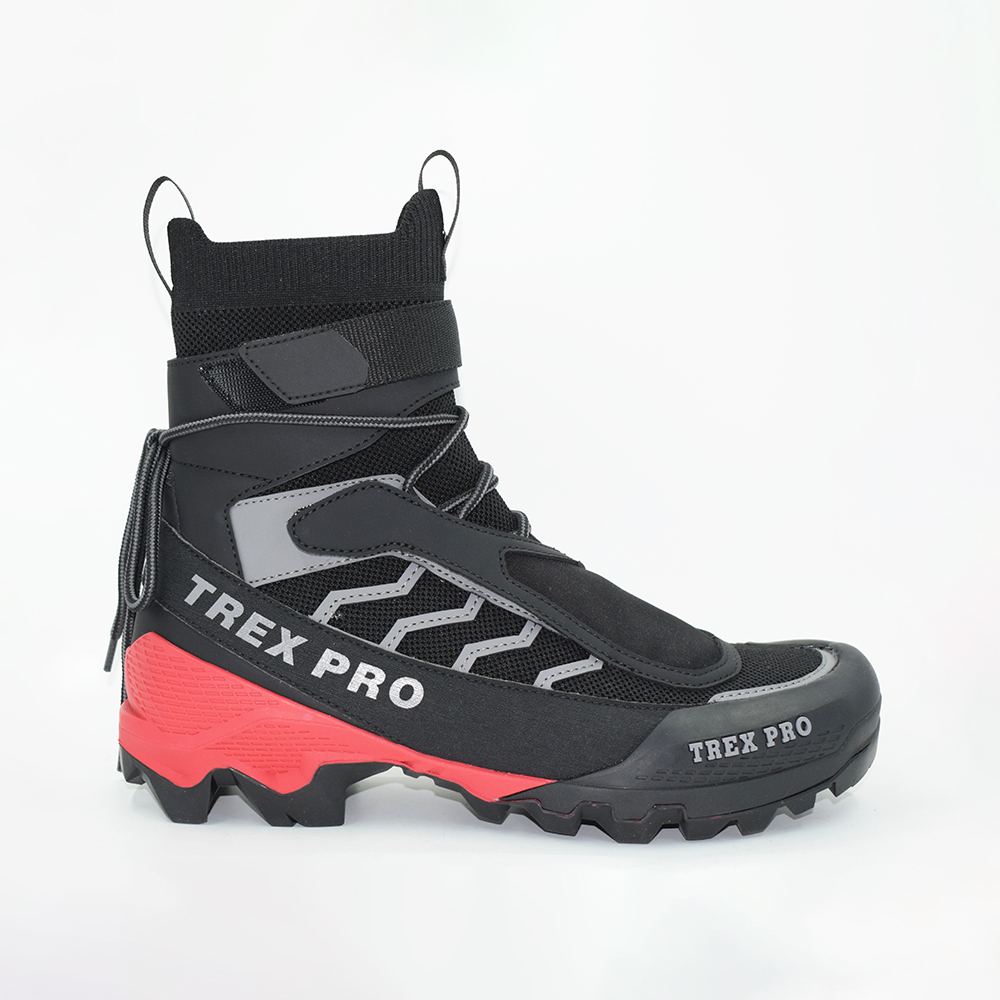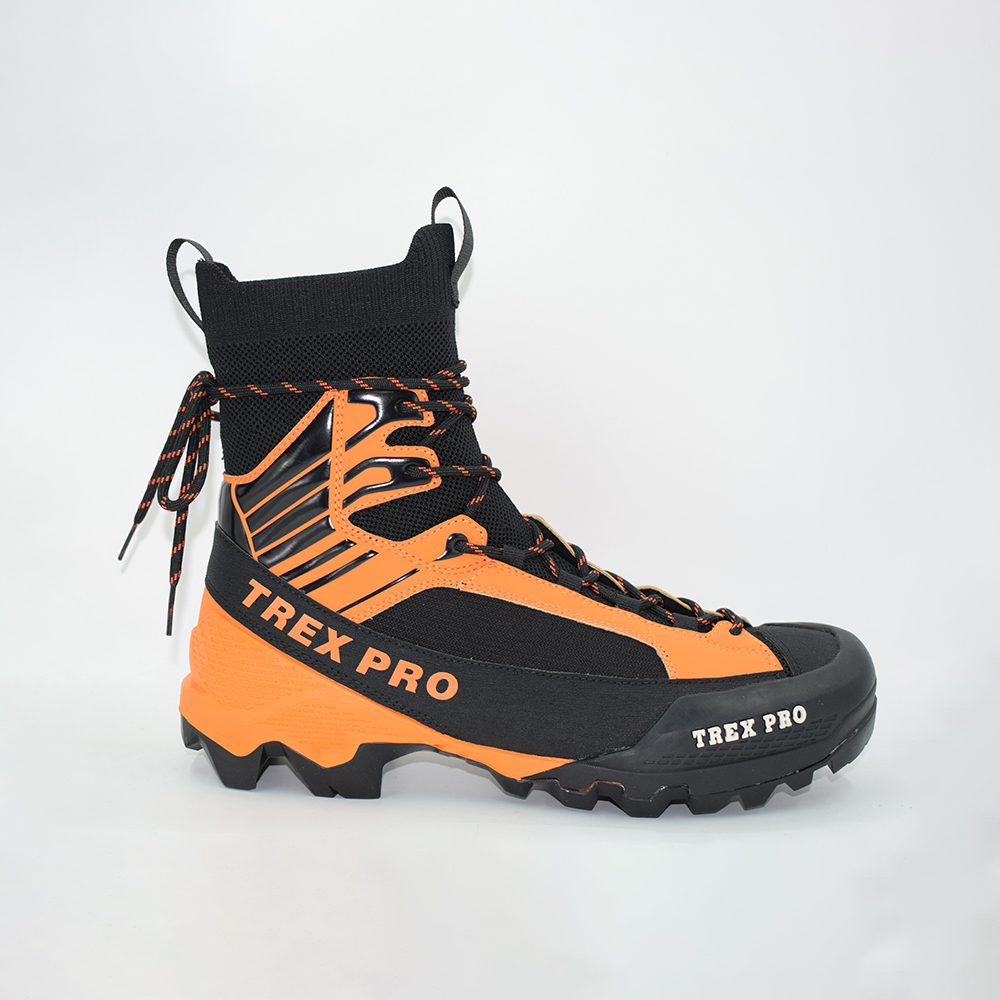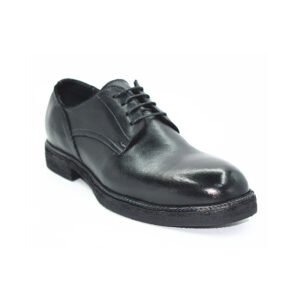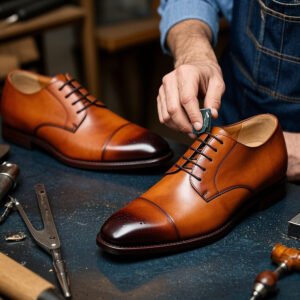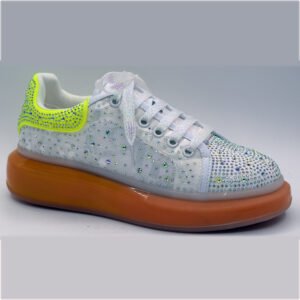Last Updated on 2025-09-06 by Topmenz Shoes
Hiking shoes have come a long way from rudimentary leather boots to today’s high-tech marvels. Designed to tackle rugged terrain while protecting and supporting the foot, modern hiking shoes blend cutting-edge materials, ergonomic engineering, and sustainability. As a professional footwear manufacturer, we’ve spent decades perfecting hiking shoes that cater to casual day hikers, thru-hikers, and mountaineers alike. This comprehensive guide dives into the anatomy, technology, and versatility of hiking shoes, revealing why they’re indispensable for outdoor enthusiasts.
1. The Anatomy of Hiking Shoes: Built for Performance
Understanding the components of hiking shoes is key to appreciating their functionality:
1.1 Upper Construction in Hiking Shoes
The upper is the foundation of durability and protection. Key materials include:
- Full-Grain Leather: Offers abrasion resistance and water repellency for rugged hiking shoes.
- Synthetic Mesh: Lightweight and breathable, ideal for fast-paced trails.
- Reinforced Toe Caps: Rubber or thermoplastic polyurethane (TPU) guards shield toes from rocks and roots.
1.2 Midsole Technology in Hiking Shoes
The midsole absorbs shock and supports the arch. Common materials:
- EVA Foam: Lightweight cushioning for agility.
- Polyurethane (PU): Denser and more durable for heavy loads.
- Rock Plates: Thin, flexible inserts in hiking shoes protect against sharp terrain.
1.3 Outsoles: The Traction Powerhouse of Hiking Shoes
Vibram® Megagrip or Contagrip® outsoles dominate the market, offering:
- Multi-Directional Lugs: Deep treads (4–5mm) grip mud, snow, and loose gravel.
- Sticky Rubber Compounds: Enhanced friction for wet rocks (e.g., Vibram’s Idrogrip).
1.4 Waterproofing Systems in Hiking Shoes
- Gore-Tex Membranes: Breathable yet waterproof barriers.
- Seam-Sealed Construction: Prevents leaks at stress points.
2. Types of Hiking Shoes: Matching Footwear to Terrain
Not all hiking shoes are created equal. Here’s how to choose:
2.1 Lightweight Hiking Shoes for Day Trips
- Weight: 1–1.5 lbs per shoe.
- Features: Flexible soles, minimal ankle support.
- Best For: Well-maintained trails and fastpacking.
2.2 Midweight Hiking Shoes for Backpacking
- Weight: 1.5–2 lbs per shoe.
- Features: Sturdy midsoles, ankle collars, and Vibram® outsoles.
- Best For: Multi-day hikes with 20–40 lb packs.
2.3 Mountaineering Hiking Shoes for Technical Terrain
- Weight: 2–3 lbs per shoe.
- Features: Rigid soles for crampon compatibility, insulated liners.
- Best For: Ice, scree, and alpine climbs.
3. Advanced Technologies in Modern Hiking Shoes
Innovation drives comfort and safety on the trail:
3.1 Adaptive Lacing Systems in Hiking Shoes
- BOA Fit Systems: Replace traditional laces with dial-controlled steel wires for micro-adjustments.
- Quick-Dry Laces: Repel moisture and resist tangling.
3.2 Orthopedic Design in Hiking Shoes
- Customizable Insoles: Heat-moldable footbeds adapt to arch shapes.
- Heel Lock Features: Deep heel cups prevent blisters during descents.
3.3 Temperature Regulation in Hiking Shoes
- Aerogel Insulation: Ultra-thin material traps heat in sub-zero conditions.
- Ventilation Channels: Strategically placed mesh panels enhance airflow.
4. Sustainability in Hiking Shoes: Eco-Conscious Manufacturing
As stewards of the outdoors, we prioritize eco-friendly practices:
4.1 Recycled Materials in Hiking Shoes
- Post-Consumer Plastics: Repurposed PET bottles become polyester uppers.
- Bio-Based Foams: Castor oil replaces petroleum in midsoles.
4.2 Circular Design of Hiking Shoes
- Detachable Components: Outsoles, insoles, and laces can be replaced to extend shoe life.
- Take-Back Programs: Old hiking shoes are ground into playground surfaces or new outsoles.
-
Rated 0 out of 5
-
Rated 0 out of 5
-
Rated 0 out of 5
-
Rated 0 out of 5
5. Testing and Durability: How Hiking Shoes Withstand the Elements
Our lab and field tests ensure reliability:
5.1 Abrasion Resistance Tests for Hiking Shoes
- DIN Standard 53516: Outsoles endure 20km on sandpaper-covered cylinders.
- Result: Premium hiking shoes retain 90% tread depth after 500 miles.
5.2 Waterproof Testing of Hiking Shoes
- ISO 20344:2011: Submerged in 10cm water for 60 minutes.
- Result: Gore-Tex hiking shoes maintain internal dryness (<5% moisture).
5.3 Flex Fatigue Tests for Hiking Shoes
- SATRA TM144: 50,000 flex cycles simulate 5+ years of use.
- Result: Midsoles retain 80% cushioning integrity.
6. Choosing the Right Hiking Shoes: A Buyer’s Guide
6.1 Fit and Sizing Tips for Hiking Shoes
- Toe Room: 1–1.5 cm space ahead of toes to prevent bruising on descents.
- Width Options: Brands like Altra offer wide-toe boxes for natural splay.
6.2 Breaking in Hiking Shoes
- Wear Time: 10–20 hours of short walks before long hikes.
- Sock Pairing: Merino wool blends reduce friction and wick sweat.
6.3 When to Retire Hiking Shoes
- Mileage: Replace after 500–750 miles or visible midsole creasing.
- Tread Wear: Bald spots or smoothed lugs signal replacement.
7. The Future of Hiking Shoes: Emerging Trends
7.1 Smart Hiking Shoes with Integrated Tech
- GPS Sensors: Track routes via Bluetooth.
- Pressure Mapping: Insoles alert hikers to uneven weight distribution.
7.2 Self-Healing Materials in Hiking Shoes
- Microcapsule Tech: Scratched uppers “heal” via embedded polymers.
7.3 3D-Printed Hiking Shoes
- Custom Outsoles: Printed to match hiker’s gait and terrain needs.
Hiking Shoes as Your Trail Companion
From urban greenways to Himalayan passes, hiking shoes are the unsung heroes of outdoor adventures. Their blend of durability, comfort, and innovation ensures every step is secure, whether you’re chasing summits or exploring local parks. As manufacturers, we’re committed to advancing hiking shoes that honor the environment while empowering explorers. Invest in the right pair, and the trail becomes limitless.
Any questions pls contact custom shoes expert Whatsapp +86 13392749315 and Get the latest news and updates straight to your email inbox.

